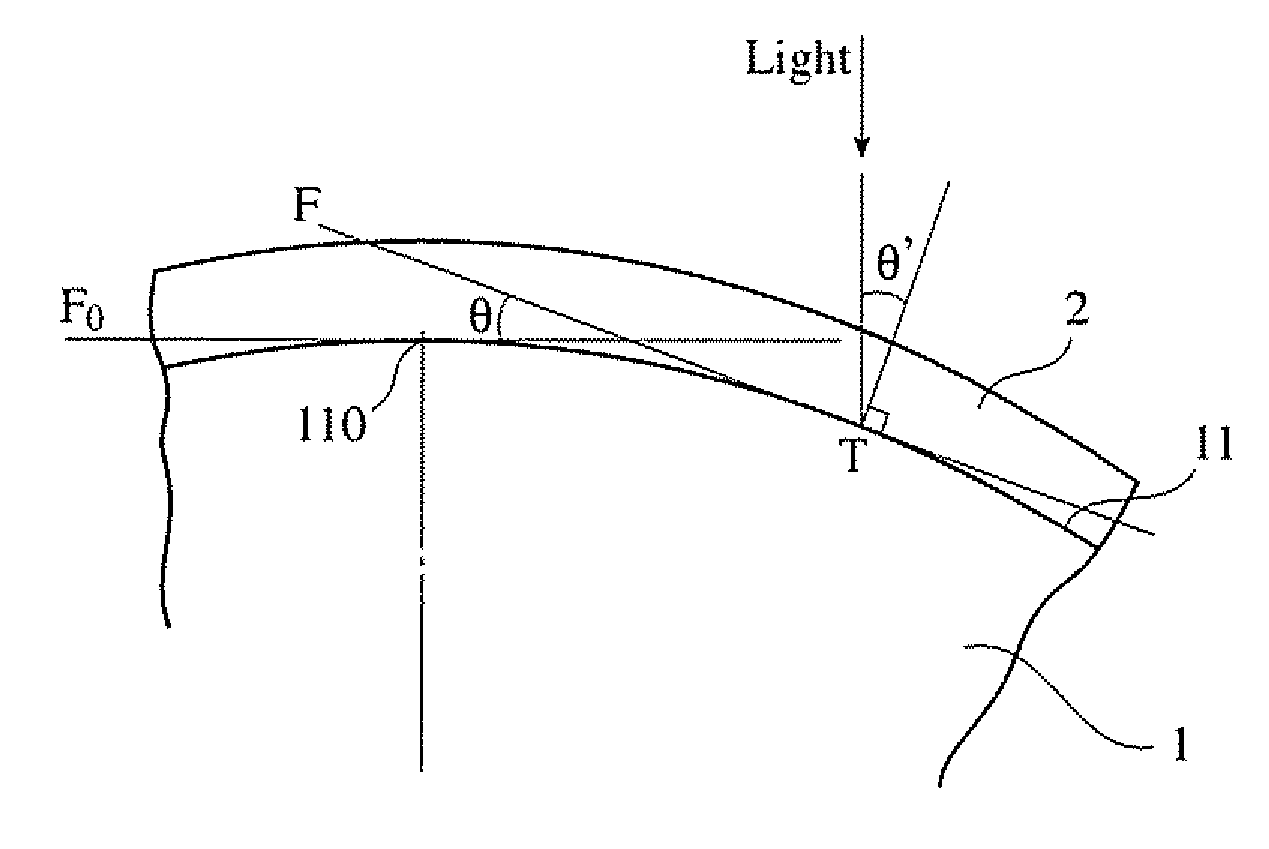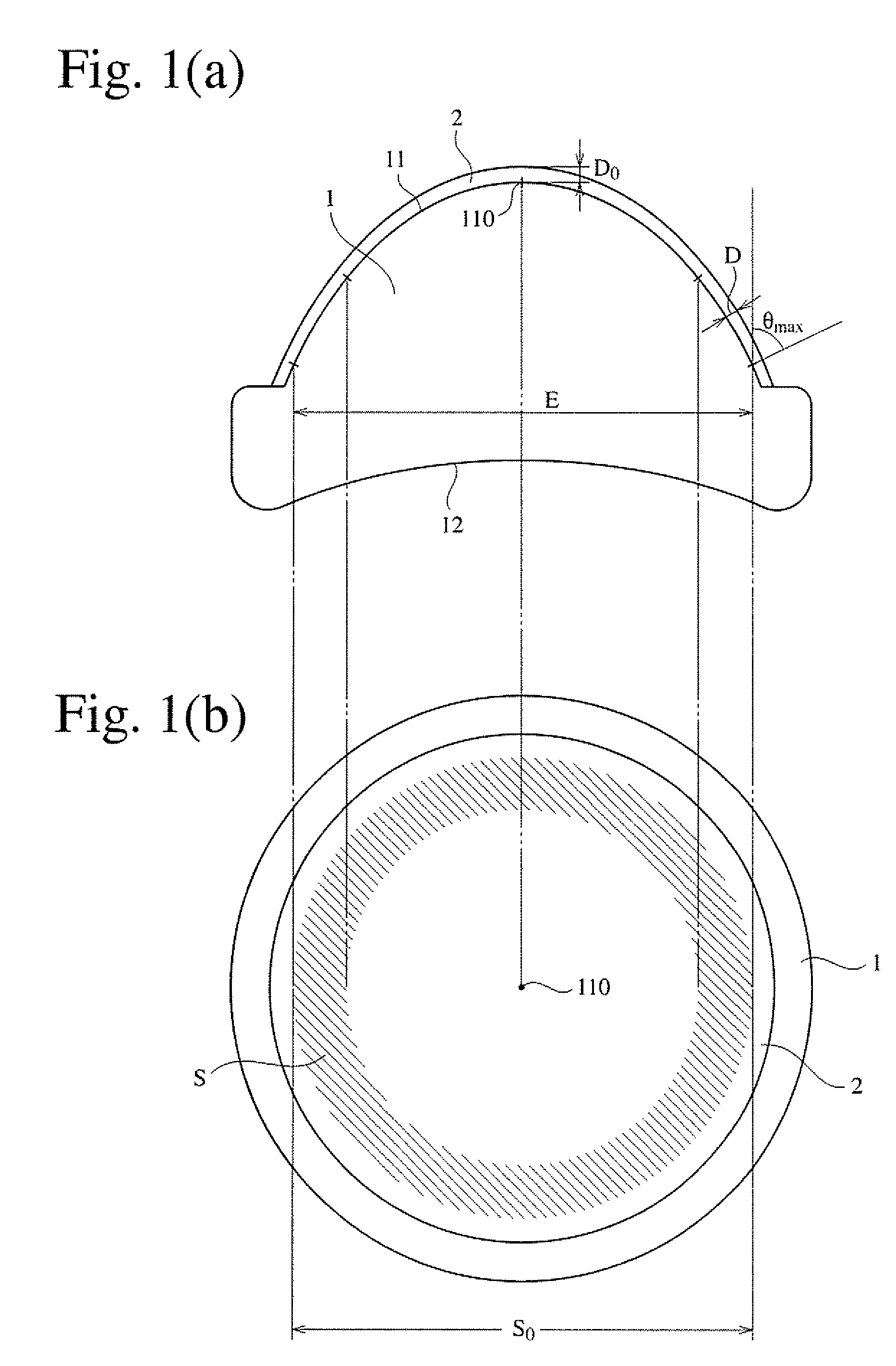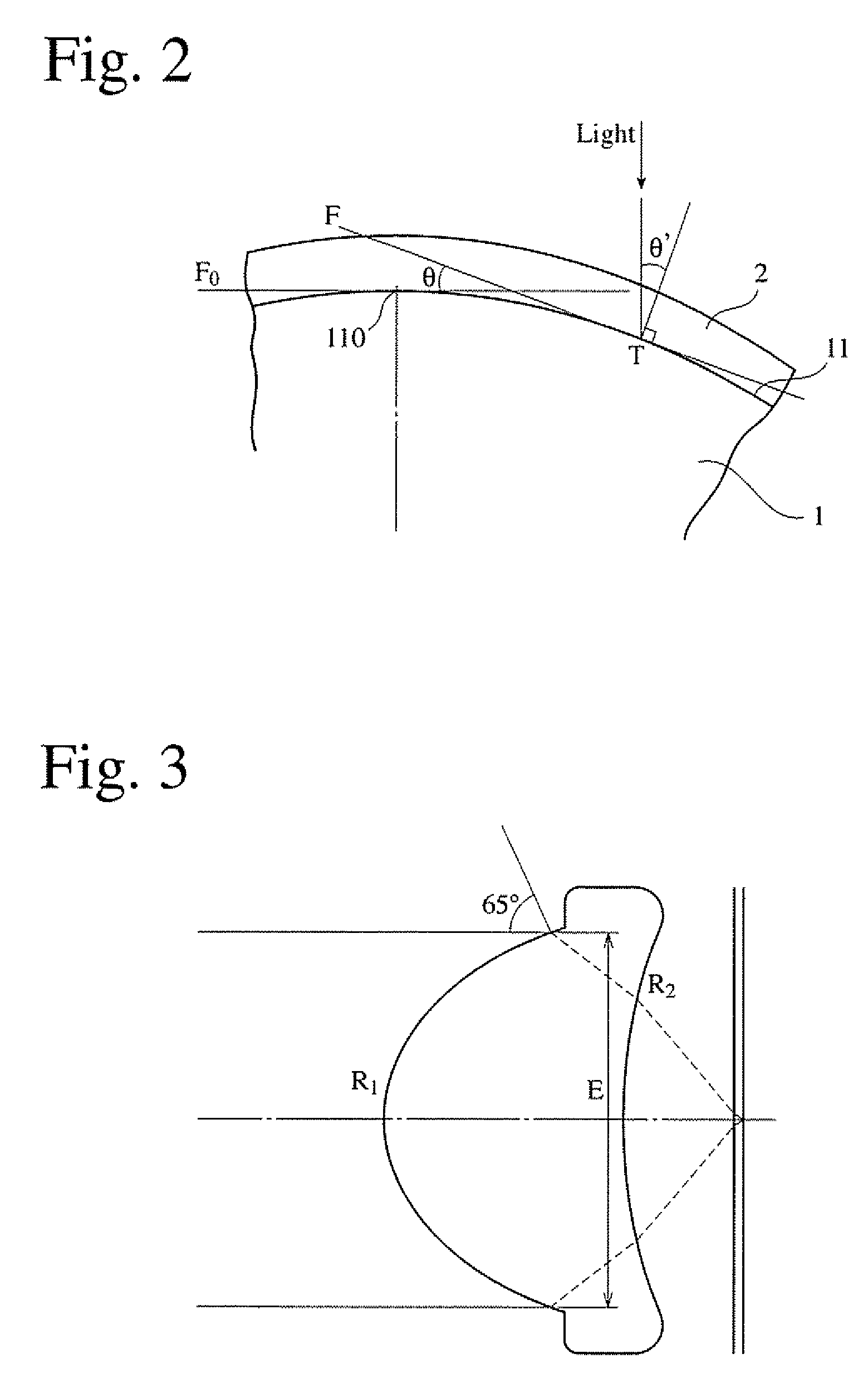Optical element having anti-reflection coating
an optical element and anti-reflection technology, applied in the field of optical elements having anti-reflection coatings, can solve the problems of reducing the anti-reflection coating. , to achieve the effect of excellent anti-reflection characteristics
- Summary
- Abstract
- Description
- Claims
- Application Information
AI Technical Summary
Benefits of technology
Problems solved by technology
Method used
Image
Examples
example 1
[0065]200 g of aluminum sec-butoxide was mixed with 700 g of sufficiently dehydrated isopropyl alcohol in a low-humidity atmosphere, sufficiently stirred at room temperature, mixed with 105 g of ethyl acetoacetate, and then stirred for 3 hours. At the same time, 300 g of isopropyl alcohol was mixed with 45 g of water in the same atmosphere, and stirred. The resultant aluminum sec-butoxide solution was mixed with an aqueous isopropyl alcohol solution, and stirred at room temperature for 24 hours to prepare a coating liquid. The resultant coating liquid was applied to a convex surface 11 of a lens 1 made of borosilicate crown glass (BK7) having an effective diameter of 3 mm, S / S0(×100) of 62%, and a refractive index of 1.518 (see FIG. 1) by a spin-coating method, cured by heating at a temperature of 150° C. for 2 hours, to obtain a lens coated with a transparent alumina gel layer having a refractive index of 1.38 and a physical thickness of 272 nm. The resultant alumina-gel-coated len...
example 2
[0066]An anti-reflection lens having a petal-shaped alumina layer having three-dimensional average surface roughness (SRa) of 22.3 nm, the maximum roughness height difference (P−V) of 206.0 nm, and a specific surface area (SR) Of 1.26 was produced in the same manner as in Example 1 except for using a lens 1 made of LAK14 glass [effective diameter: 3 mm, S / S0(×100): 62%, refractive index: 1.72]. This anti-reflection lens was examined with respect to transmittance in the same manner as in Example 1. The results are shown in Table 1.
PUM
| Property | Measurement | Unit |
|---|---|---|
| roughness | aaaaa | aaaaa |
| surface inclination angle | aaaaa | aaaaa |
| reflectance | aaaaa | aaaaa |
Abstract
Description
Claims
Application Information
 Login to View More
Login to View More - R&D
- Intellectual Property
- Life Sciences
- Materials
- Tech Scout
- Unparalleled Data Quality
- Higher Quality Content
- 60% Fewer Hallucinations
Browse by: Latest US Patents, China's latest patents, Technical Efficacy Thesaurus, Application Domain, Technology Topic, Popular Technical Reports.
© 2025 PatSnap. All rights reserved.Legal|Privacy policy|Modern Slavery Act Transparency Statement|Sitemap|About US| Contact US: help@patsnap.com



